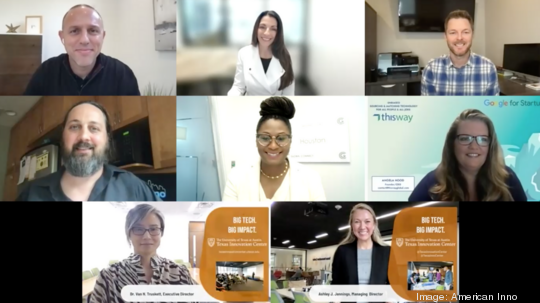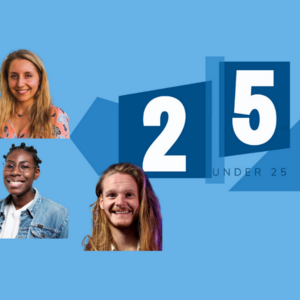
It takes open communication within a company — as well as connections to academia and local startup communities — to foster an innovative culture that can truly put it on the cutting edge.
That was one of the big themes during a panel conversation among corporate innovation experts in Texas who shared insights into how some of the world's fastest-moving organizations stay nimble and interact with entrepreneurs across the spectrum.
"My tagline is that we live at the intersection, meaning live at the intersection between the strategy and the operations. Live at the intersection with where the humans meet the financial outcomes," said one of those experts, Brian Cahak, managing director of digital growth and marketing operations at Accenture Interactive. "Solve it in a way where you're delivering financial results and your humans are super excited and want to stay and be bigger flames for others looking to do the same. So live at that intersection, which is where I think the real value is."
Cahak was joined by Capital Factory Chief Operating Officer Joelle Risolo Vail; Fiona Mack, head of Johnson & Johnson's JLABS group at the Texas Medical Center; Van Truskett, executive director of the Texas Innovation Center at the University of Texas; and Ashley Jennings, managing director of the Texas Innovation Center.
They said collaboration across Texas cities is also key for entrepreneurs and corporations, and the state is going through a special moment with the influx of many big tech companies, from Indeed to Dell, Google and Tesla.
"I think the city of Austin is really at a pinnacle point where we can focus all of these efforts. Our tagline is big tech, big impacts," Jennings said. "I think it's really important for the collaboration to continue and for the Texas ecosystem as a whole and the startup ecosystem as a whole just to continue coming together."
Here's a look at a few other insights, edited for brevity. See the full presentation in the video at the bottom.
How do you develop and sustain innovation?
Fiona Mack: "We have multiple approaches for accessing innovation, one of which is really to start at the beginning with the the early stage entrepreneurs. And so our JLABS locations, the incubator arm, are stationed across 13 locations throughout the U.S. and also within Asia and London.
"We take a proactive way in which we go into the community and try to develop these connections with key academics, serial entrepreneurs, venture capitalists. We like to see what is the potential pipeline of opportunities within there, but then also perhaps to create these new companies if they're also aligned strategically with Johnson & Johnson's research focus. We really try to bring a very broad toolset to help support our entrepreneurs along with potential funding opportunities."
Joelle Risolo Vail: "What we've identified is when you bring the right parties together, they find each other. If you've ever walked into Capital Factory, you'll find it is extremely active. Innovation needs a lot of new blood that flows through it all the time, and you need to allow for those connections to happen freely. So the concept of making space, having somewhere where people can come, knowing that they can bump into individuals, having an open floor plan, having the opportunity to drive events or meetups, allowing people to kind of bring their own agenda to the table and us having the ability to host that agenda. It's been super, super successful.
Van Truskett: At the Texas Innovation Center, we are taking a look at the very front end of what innovation means. How do you create and should you create a startup at all? And so what we're taking a look at is a framework that we call needs-driven innovation, where whether you're a one-person company or a corporation, you really need to start with looking at evaluating needs and defining what is known as a need statement and looking at the variety of needs that are possible and figuring out the best opportunity."



